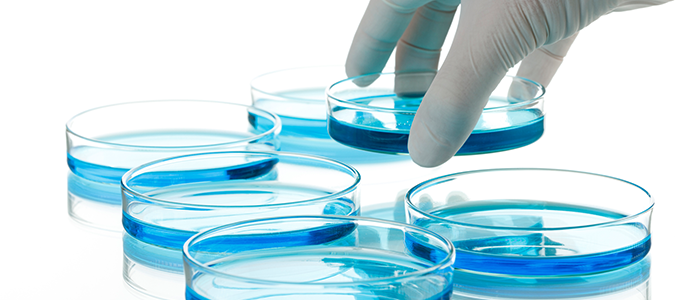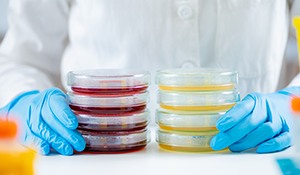Environmental Monitoring Plates: Things to Consider
Written By: Martin Sketchley |

Effective environmental monitoring is essential for contamination control in regulated industries. This guide covers key considerations, from monitoring methods to selecting the right microbiological media and ensuring quality at point of use:
- Why environmental monitoring matters: Discover how industries control microbial contamination
- Passive vs active monitoring: Learn the differences between settle plates, swabs, and air sampling methods
- Choosing the right microbiological media: A critical factor for achieving accurate contamination control
- Avoid false positives: Selecting the correct agar type prevents compromised data
- Storage and quality control: Ensuring your prepared media remains reliable at point of use
Requirements for Environmental Monitoring Remain Consistent
In many industries, maintaining control over viable and non-viable particles within a monitored space is essential. The pharmaceutical industry, in particular, relies on well-established methods to ensure compliance with stringent environmental monitoring standards. These methods fall into two main categories: passive and active monitoring.
Settle plates, the primary passive method, allow airborne microorganisms to settle naturally on to an exposed agar surface over a defined period. Swabs, meanwhile, are commonly used for surface monitoring. Active air sampling methods, such as impaction samplers, actively draw a known volume of air over or through a collection medium to capture and quantify microbial presence.
Each approach plays a crucial role in maintaining contamination control within controlled environments, such as cleanrooms and isolators, as well as in less regulated areas such as factories or waste processing facilities.
Choosing the Correct Microbiological Media is Essential
Regardless of the setting, whether it's a pharmaceutical cleanroom, operating theatre, or manufacturing facility, the fundamental requirements for microbiological media remain the same: the chosen media must be sufficiently robust to withstand the sampling process and subsequent incubation without degradation: any breakdown could compromise the accuracy and reliability of results. Additionally, the formulation must be suitable for detecting the target microorganisms present in the environment.
Selecting the correct medium and presentation is critical, as inappropriate choices can interfere with sampling accuracy, potentially leading to false positives or compromised data.
For pharmaceutical applications, standard microbiological media, such as Tryptone Soya Agar (TSA) and Sabouraud Dextrose Agar (SDA), are widely used. These are often supplemented with neutralisers to counteract the effects of residual antibiotics or disinfectants. For other industries, more selective or differential media may be necessary to detect specific microorganisms of concern.
The volume and composition of the media must also be suited to the specific environmental conditions in which they are deployed. For instance, high-airflow environments such as laminar flow cabinets or Grade A filling areas can cause rapid dehydration of agar plates. In such cases, deep-fill plates, such as those available from AnalytiChem's portfolio of Redipor products, provide greater resilience, with reduced likelihood of desiccation.
Media formulations with enhanced agar strength also offer additional stability, ensuring sample integrity, both in high-flow environments and in laboratory conditions post-sampling.
Ensuring Quality at Point of Use
Even after selecting the correct product, maintaining quality at the point of use is crucial.
Prepared culture media should be stored in conditions that preserve its integrity, such as controlled room temperature storage, which facilitates delivery in optimal condition. When used within a cleanroom, it's equally important that operators can visually inspect individual plates through their packaging before use, to confirm that they are free from surface moisture, microbial growth, or other imperfections.
Poor-quality plates not only impact testing accuracy but can also lead to unnecessary investigations into false-positive results, wasting valuable time and resources.
To benefit from the greatest performance of your prepared media, and thus enjoy confidence in your results, it's essential to use a reliable, adaptable supply partner with the agility to deliver the highest quality products on a regular basis and evolve with the changing needs of your business. For more information on AnalytiChem's range of Redipor prepared media products, both off-the-shelf and custom formulations, contact our team.



